It was ten years ago, almost to the day, that I participated in a series of scoping field views for the Pennsylvania Department of Transportation (PennDOT) that involved a brilliant idea to address the needs of two seemingly separate projects.
It was early in the day when we saw a truss bridge unable to carry heavy trucks rattling through the region on their way to natural gas-drilling sites.
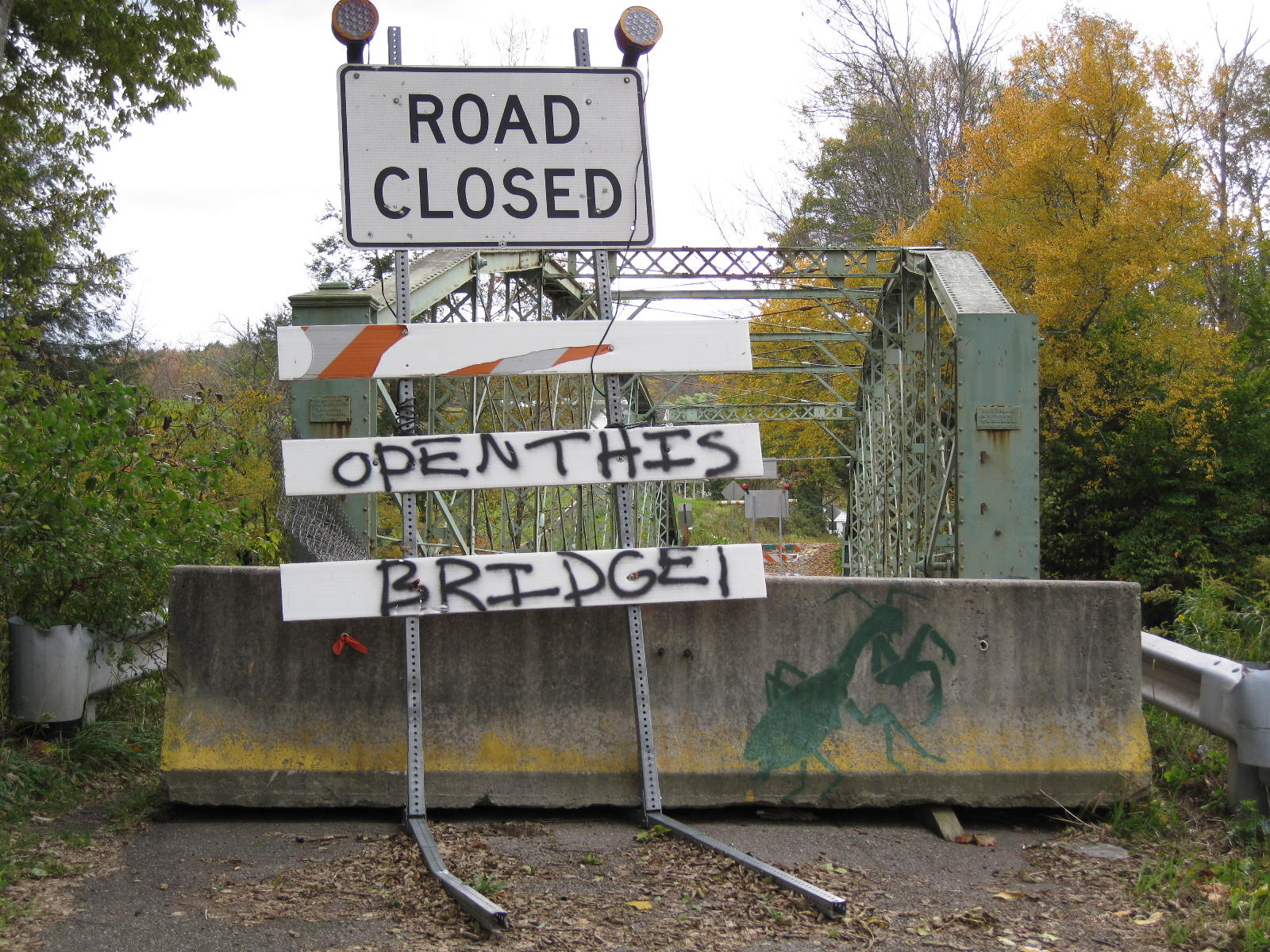
SR 1029 Lenticular Bridge over Tunkhannock Creek, Nicholson Township, Wyoming County. The bridge closed to vehicles in 2005. (Used by permission, PennDOT, 2008).
Later, standing next to a swale in Lazy Brook Park, Tunkhannock Township, we listened to the local municipal officials talk about using PennDOT Transportation Enhancement funds to construct a wooden bridge at this location. The bridge was needed to carry pedestrians from the west to the east side of the park and to accommodate light emergency vehicles when the road to the north was under water.
Our head of PennDOT Cultural Resources, Dr. Ira Beckerman, was with us that day and was struck by inspiration; he leaned over to me and said, “Maybe we could relocate that last truss we saw to this crossing?” with the grin that indicated he was already cooking up a plan in his head.
What’s a lenticular truss bridge?
Pennsylvania boasts some beautiful and important truss bridges. The one we visited in April of 2008 was notably special; the National Register-listed structure is one of four thru lenticular trusses in the state. The structure includes curved upper and lower chords forming an oval or lens shape (hence, a lenticular truss).
Other names given to the lenticular refer to the truss shape and include “pumpkin-seed”, “fish-belly”, “cats-eyes”, “elliptical truss”, “double bowstring” and “parabolic truss”. For a period of about 20 years, the Corrugated Metal Company (later known as the Berlin Iron Bridge Company) from East Berlin, Connecticut manufactured the lenticular truss bridge form.
While 600 bridges of this type were constructed, only approximately 50 lenticular trusses remain in the country today, including the four in Pennsylvania. Probably the most famous example of the lenticular truss bridge in Pennsylvania is the Smithfield Street Bridge in Pittsburgh.
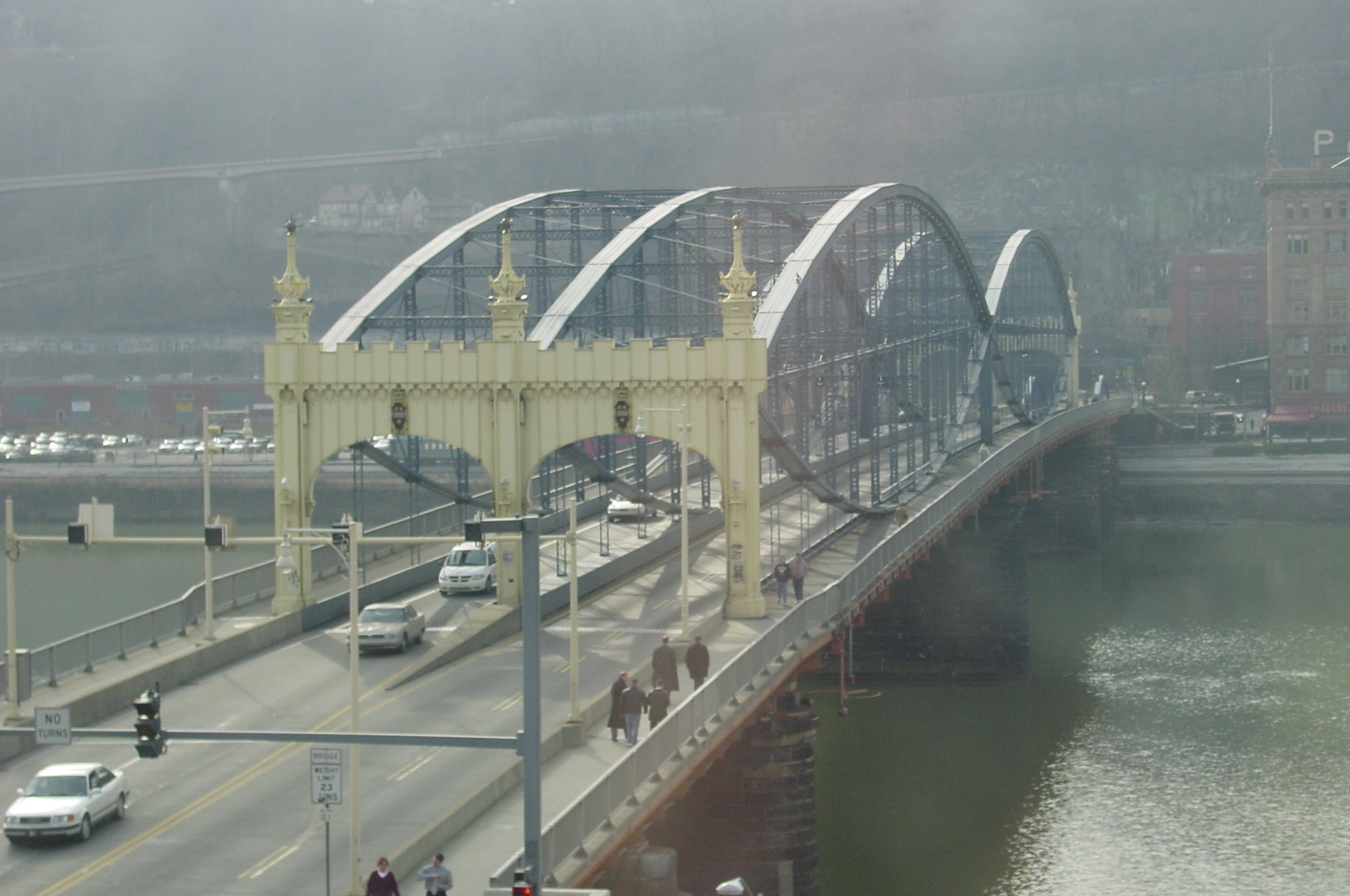
Smithfield Street Bridge in Pittsburgh, PA. A National Historic Landmark, this lenticular truss was constructed in 1883 to cross the Monongahela River. It features a combination of iron and steel and stands as an elegant example of its bridge type. It is the oldest steel truss in the United States. (source: National Register of Historic Places Nomination Form, Donald C. Jackson, 1975)
(Used by permission, David Anthony, 2004)
Despite initial opposition, a lenticular truss was erected over Tunhannock Creek near Starkville in Wyoming County in 1881. A grand jury decided in 1880 that it wasn’t fiscally feasible to build a bridge at this location; however, township supervisors managed to construct the abutments for this needed crossing, making personal donations toward the cause.
By April 1881, the county commissioners relented and awarded the superstructure contract to the Corrugated Metal Company. (McCormick Taylor, Rehabilitation Study for SR 1027 Section 770, October 2011.)
Like other examples of the type built before 1890, the Tunkhannock Creek lenticular consists of wrought iron rather than steel. Pin connections, rivets, and laced sway bracing join the major parts of the bridge. Cast iron finials that were common to the form once topped all four corner posts; two remained at the time of project scoping in 2008.
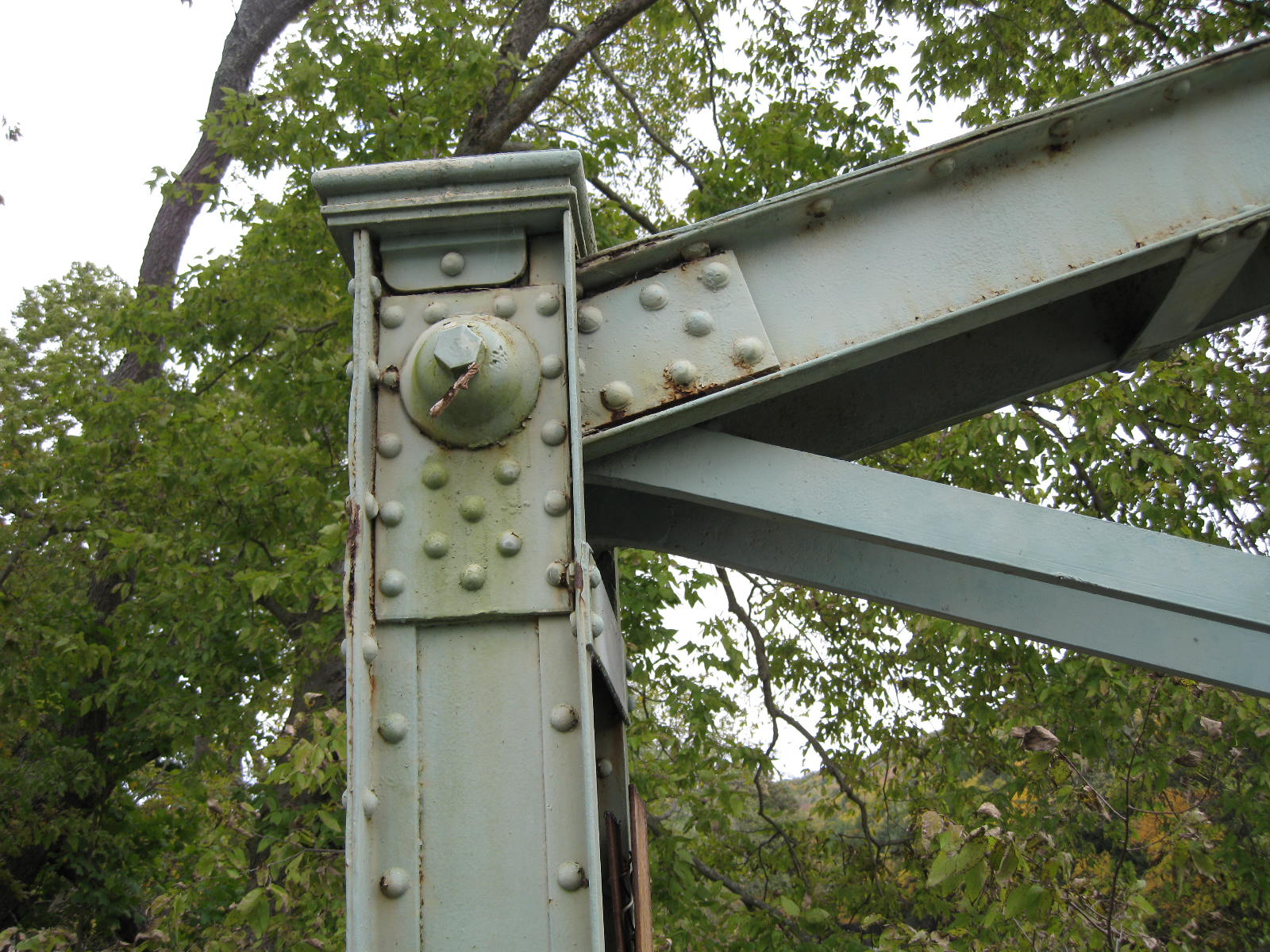
Wide end post topped with a finial showing the top and bottom chords extending outward. (Used by permission, PennDOT, 2008)
Consultation, compromises, and construction
Similar to its placement over Tunkhannock Creek in 1881, it took a significant effort to realize Ira’s idea to relocate the lenticular truss to Lazy Brook Park. Factors in favor of the truss’s relocation included: it was the right length to fit across the park swale; it was located close to the proposed new location (only seven miles); and a willingness on the part of the Township to maintain the structure once it was moved off PennDOT’s transportation network.
The ensuing years saw consultation at the local, state, and national levels; endless dialog between the townships, the projects engineers, Federal Highway Administration, State Historic Preservation Office, and PennDOT; legal review upon legal review; and even a legislative act.
McCormick Taylor project engineers led by Joe Thompson, closely worked with PennDOT’s project manager Chris Tomaszewski of the PennDOT Bridge Unit along with the State Historic Preservation Office and Section 106 consulting parties to identify the bridge’s character-defining features to ensure their preservation in the disassembly, rehabilitation, move, and reassembly.
PennDOT’s Kara Russell and Ira tackled funding challenges within our own agency and with Federal Highway Administration, the project’s lead federal agency. This included the paperwork necessary for the Commonwealth to auction the bridge and the legal documents needed to transfer ownership to the Township.
After much planning, in June of 2015, the truss was lifted off its abutments to start its journey.
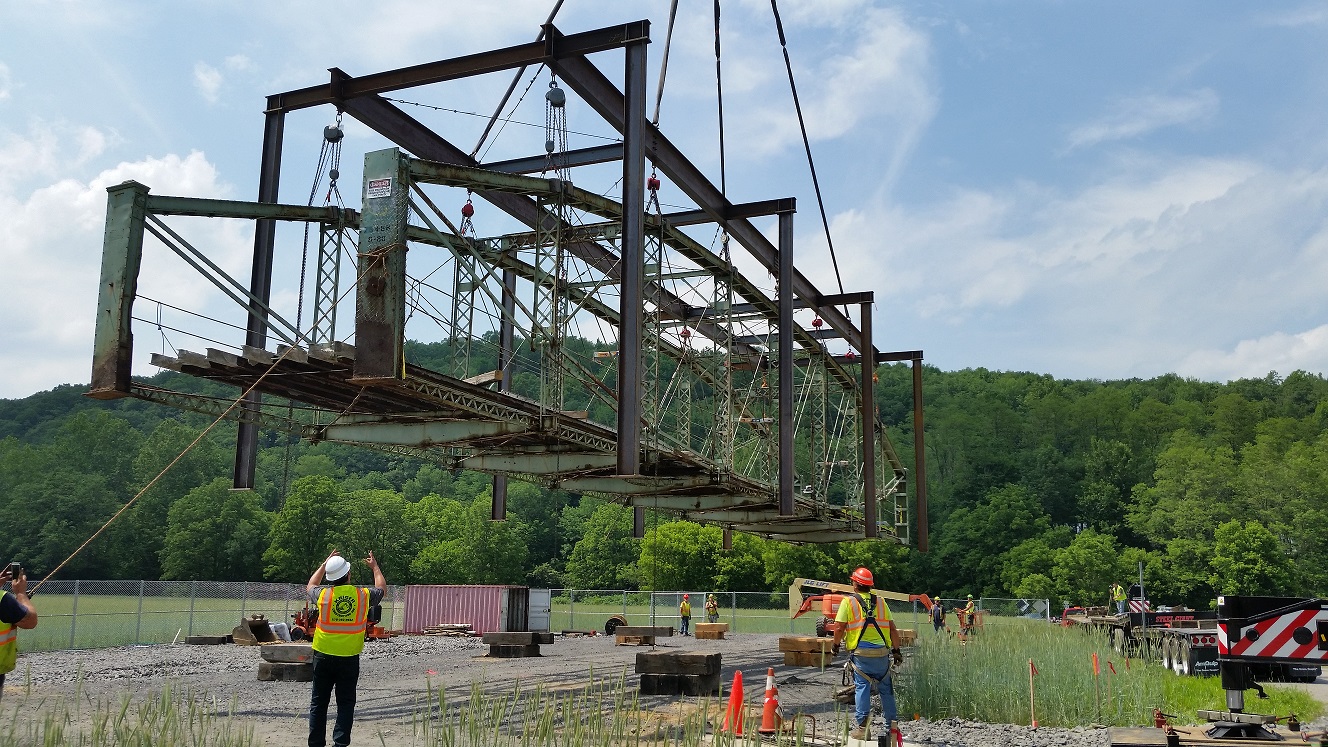
A cage was constructed around the bridge to stabilize it while being lifted off its original abutments. (Used by permission, McCormick Taylor, 2015)
Nels Raynor, of Bach Steel, accompanied the bridge to his shop in Michigan for rehabilitation under more controlled conditions.
Over three years later, it arrived at Lazy Brook Park in the late winter of 2018.
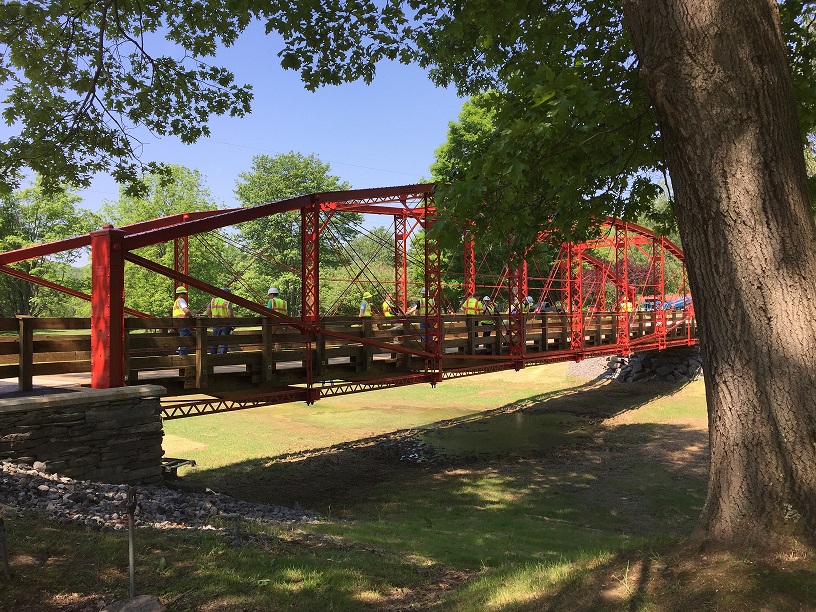
The rehabilitated lenticular truss reassembled over a swale in Lazy Brook Park, Tunkhannock Township. (Used by permission, PennDOT, 2018).
Missing or damaged elements had been fabricated in kind. Pin connections and field rivets had been restored. The missing finials had been recreated, returning the bridge to its original beauty. The truss was erected on new concrete abutments, faced with stone from the abutments along Tunkhannock Creek. Consulting parties chose a fabulous bright red for the final coating.
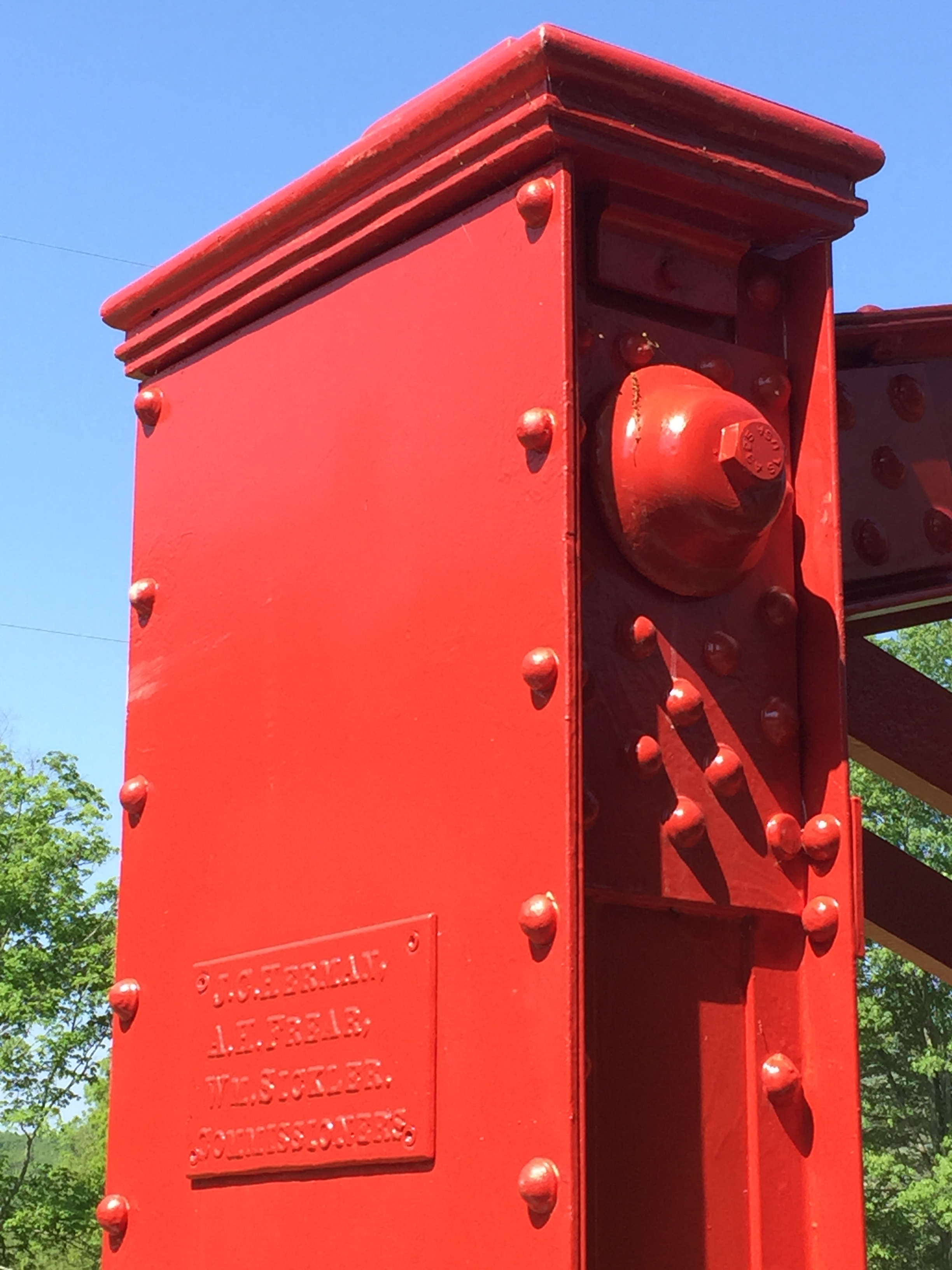
Rehabilitated end post with cap and builder’s plaque. Note the plate and rivets. (Used by permission, PennDOT, 2018).
It worked. We are left with a preservation outcome for a nationally significant bridge and a functional vehicular crossing at the truss’ former location.
There are instances when truss bridges can be rehabilitated in place to meet the traffic needs while retaining the characteristics that make it significant. The Pine Creek Lenticular Truss in Lycoming County is a stellar example.
Analysis indicated this 1889 bridge (also built by the Berlin Iron Bridge Company) could be strengthened and the approaches reconfigured to carry vehicles safely over the creek. More information is found here on ProjectPath.
I have been on the bridge a few times since it opened and I’m thrilled to hear people’s positive reactions. It has become a focus of the park. Tunkhannock Township hosts the NEPA Bluegrass Festival at Lazy Brook every year, and the bridge could be incorporated as the event centerpiece.
While preservation and transportation may seem to have antithetical goals, projects like this highlight how good ideas can become reality, having beneficial and long-lasting results for the public.
For more information on this topic, you can also check out this article about the Lazy Brook Park bridge in STRUCTURE magazine, October 2018, www.STRUCTUREmag.org.
Hey, mister, have I got a bridge for you…
Do you have an idea for a new home for a historic truss bridge? If so, please contact Tyra Guyton (tguyton@pa.gov).
Today’s guest author is Kris Lammi Thompson. Kris is an above-ground cultural resources specialist for the Pennsylvania Department of Transportation, covering Berks County, the Lehigh Valley, the Endless Mountains, and Northeastern PA regions. She is actively involved in the SHPO/PennDOT collaborative process to find new homes for historic trusses.
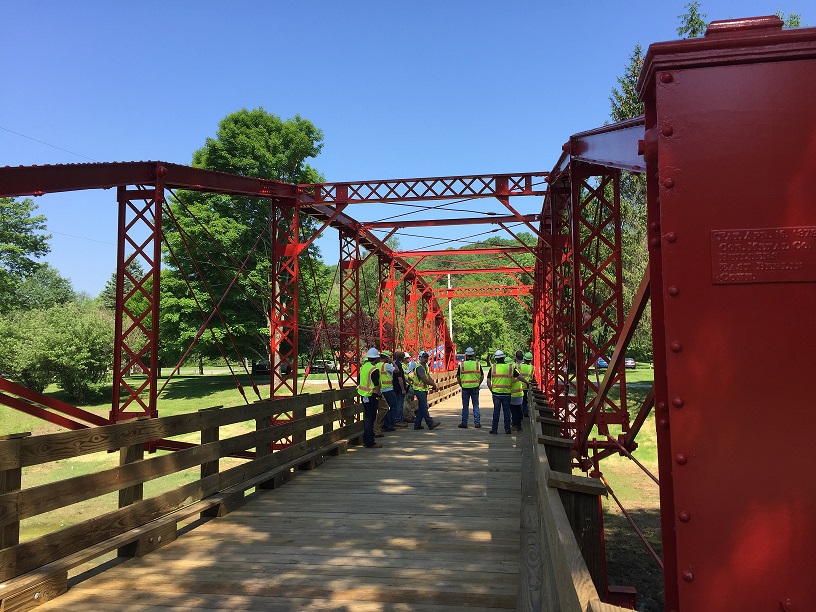
Leave a Reply